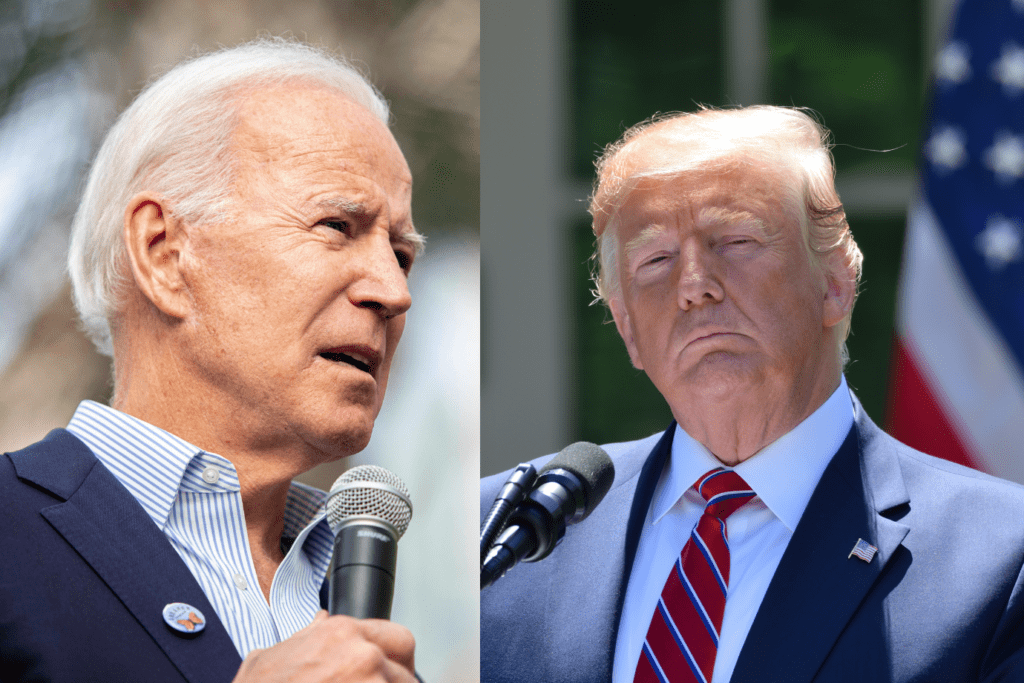This Tuesday, America will elect its next president, and the outcome could be disastrous for women’s health. With so much at stake, it’s easy to lose track of exactly what each candidate stands for, so here’s a breakdown of what the election will mean for women.
As I write this, it’s looking likely that former vice president Joe Biden will win the election. He is polling ten points ahead of Donald Trump nationally, and has a smaller, but still significant, lead in key swing states.
Nate Silver’s esteemed presidential forecast at FiveThirtyEight gives Biden a 90% chance of victory. But as we know, anything can happen on election day.
Four more years of Trump would put decades of progress on women’s rights, and women’s health in particular, at stake.
What does Trump stand for?
Trump is very vocal about his stance on abortion rights. If re-elected, he will continue to wage war against reproductive rights by any means possible. In October, he tweeted in all caps: PRO LIFE! VOTE!
In his second term, Trump wants to make it harder and harder to get an abortion, and wants to wind back federal protections for women and people with female reproductive organs seeking abortions. He wants a near-total abortion ban, and has only expressed a willingness to allow abortions in cases of rape or incest.
Trump’s extreme anti-choice views ensure that evangelical Christians – of which there are 200 million in America – will continue to support him. Religious groups have called him “the most pro-life president ever.”
Part of Trump’s anti-abortion campaign is already set in stone. He promised in 2016 to only appoint judges to the Supreme Court who are in favour of overturning Roe v Wade, the key judgment that confirmed that all women in the US have the right to an abortion.
Trump has come good on this promise. Earlier in his presidency he appointed Brett Kavanaugh and Neil Gorsuch to the bench, both of whom have stated they are in favour of overturning the law. But they didn’t have enough anti-choice judges on the bench to sway the vote if a case did come before the court – until now.
In one of his final, and perhaps most significant, moves as president, Trump appointed conservative justice Amy Coney Barrett to fill the seat that became vacant when women’s rights champion Ruth Bader Ginsburg died in September (???).
In spite of a decades-old tradition that sitting presidents should not fill supreme court seats in the last year of their presidency – a tradition that kept Obama from nominating a justice to fill the seat that was ultimately filled by Neil Gorsuch – Trump rushed through Coney Barrett’s nomination and appointment in recent weeks. Her appointment could be the death knell of abortion rights.
The justice has publicly stated that she is anti-abortion and that she favours the reversal of Roe v Wade. She is also a former member of pro-life group based in Indiana.
Her previous rulings on abortion tell the same story. She has ruled in favour of a law that would force doctors to inform the parents of a minor seeking an abortion, with no exceptions. She also called for a state law that sought to ban abortions related to sex, race, disability or life-threatening health conditions to be reheard.
President Trump said in September that it is “certainly possible” that the court, now with a conservative majority thanks to Coney Barrett, will soon decide whether to overturn Roe v Wade.
But abortion rights are not the only crucial rights for women at stake on Tuesday. Trump also plans to wind back key provisions of the Affordable Care Act – known as Obamacare – that protect the rights of women. Obamacare did away with laws that discriminate against women when it comes to access to health care, and Trump’s promise to repeal the act would eliminate those protections.
Repealing the ACA would also get rid of key programs to ensure women can access contraception and reproductive care, and would allow insurers to charge women more than men and would allow them to consider pregnancy as a pre-existing condition that could raise premiums.
Trump has already introduced regulations that strip away no-cost contraception if employers have a moral objection to it, regulations that disqualify providers that refer patients for an abortion, and redirected federal funding towards crisis pregnancy centres – organizations dedicated to convincing pregnant women not to have an abortion.
Trump also supports the Hyde Amendment, which prevents any federal funding from being used to pay for abortions except in cases of rape or incest.
***
Want more stories on women’s health? Sign up for our new Women’s Health Newsletter, delivered to your inbox every week.
***
What does Biden stand for?
In stark contrast, Joe Biden has promised to codify the ruling in Roe v Wade into federal law, which would create new and better protections for the right to abortion in all fifty states. He has also pledged to only appoint judges to the country’s top court who would uphold the ruling in Roe v Wade.
Biden said he would repeal the Hyde Amendment, and his public health care plan involves dedicating public insurance funding to abortion services.
He has promised to repeal Trump-era rules that allow health care providers to refuse to give patients proper abortion care as rules that allow health care providers to discriminate against people who have had terminations.
Biden also promises to retain and expand Obamacare, and to introduce a public option that would make sure more American adults have health coverage. His campaign website also says he is dedicated to expanding access to affordable childcare and to affordable care for elderly and disabled Americans.
It’s rumoured that the Biden camp might even try and change the rules to increase the number of justices that sit on the Supreme Court in retaliation against Republicans’ decision to push Coney Barrett’s nomination through. Adding justices to the court would allow Biden to nominate his own, more liberal judges who could work to protect the ruling in Roe v Wade.
Biden is fond of saying that this is a battle for the soul of America. He’s right. And it’s a battle for the bodies of women and marginalized genders, too.


